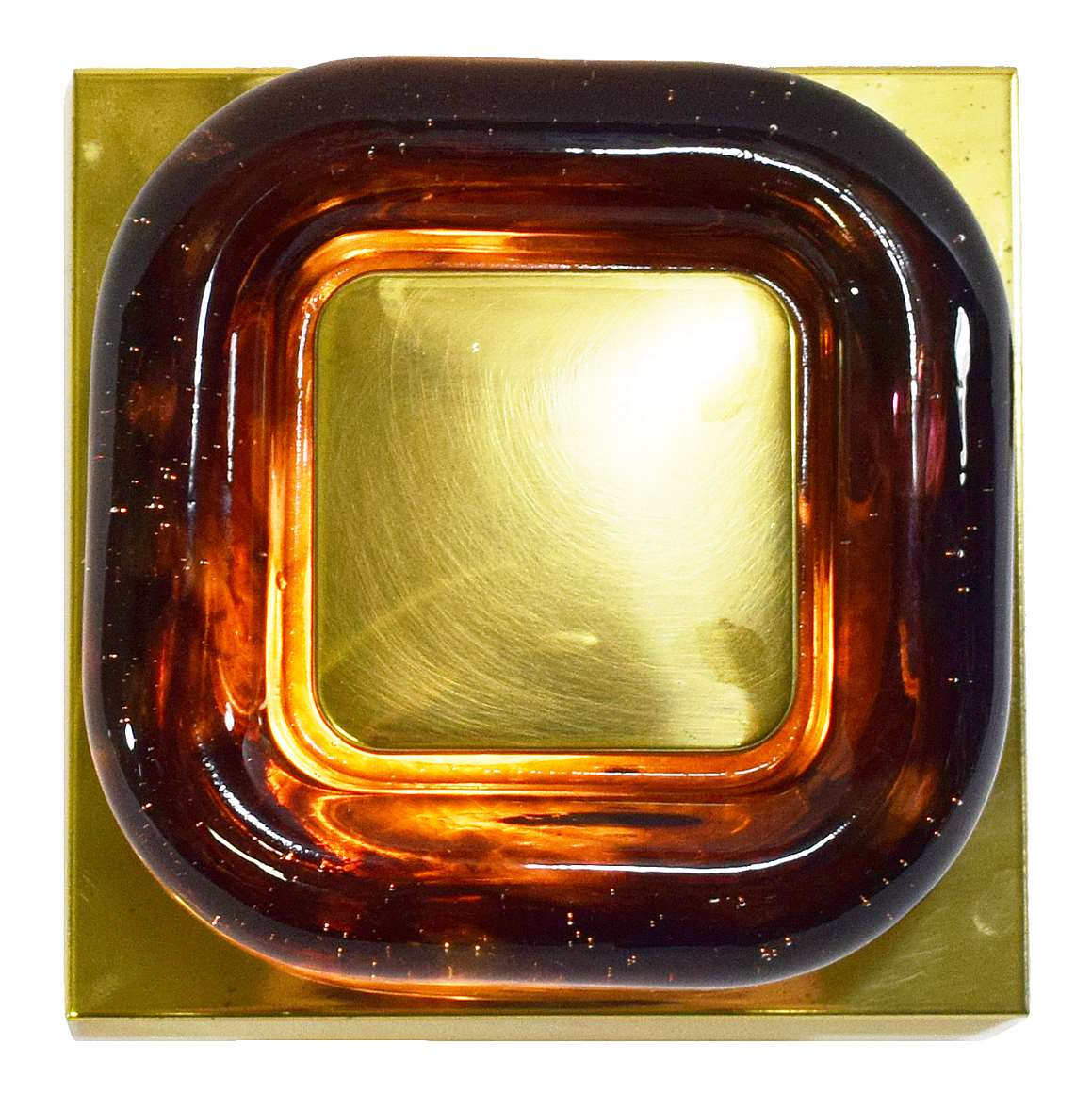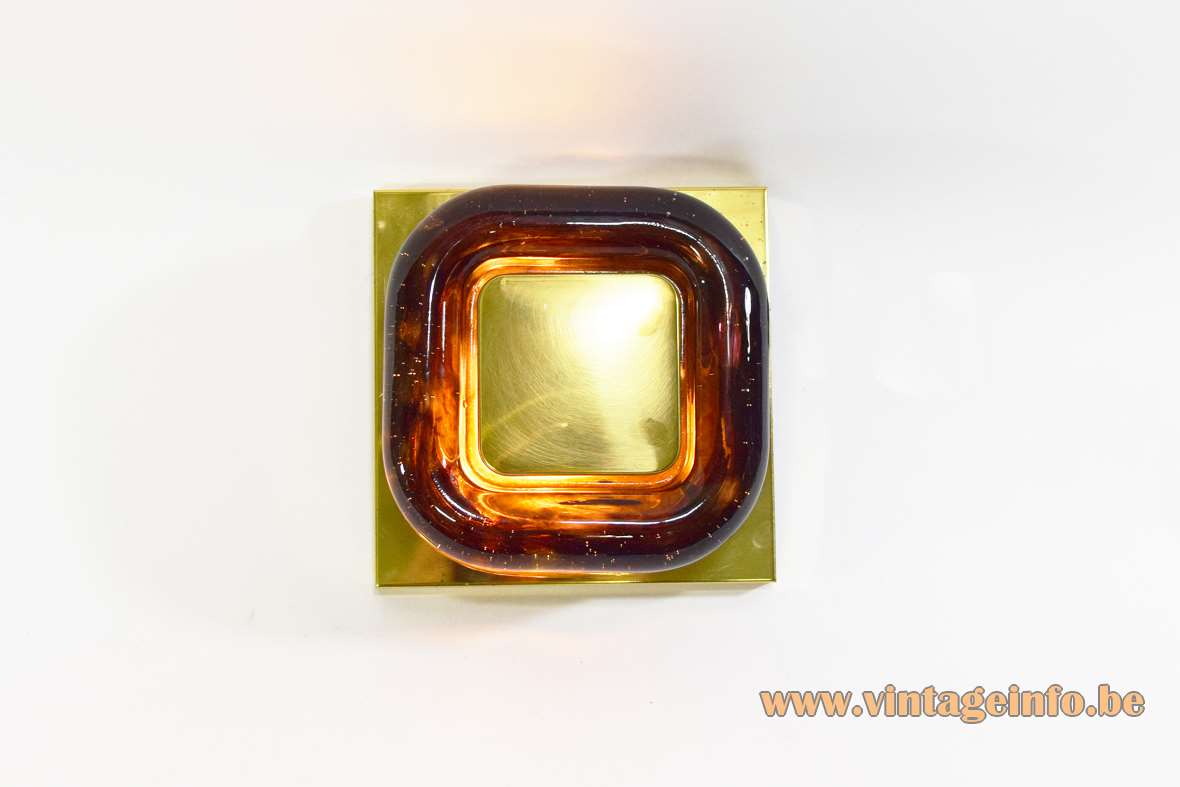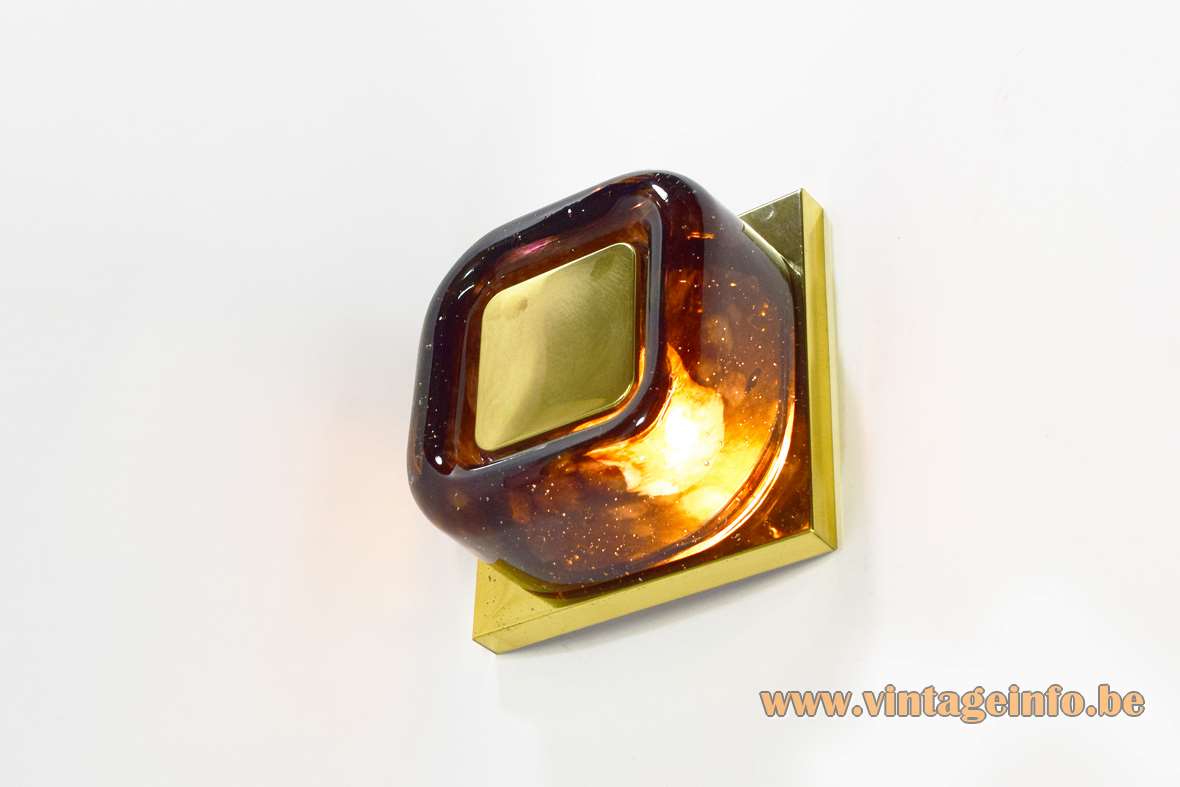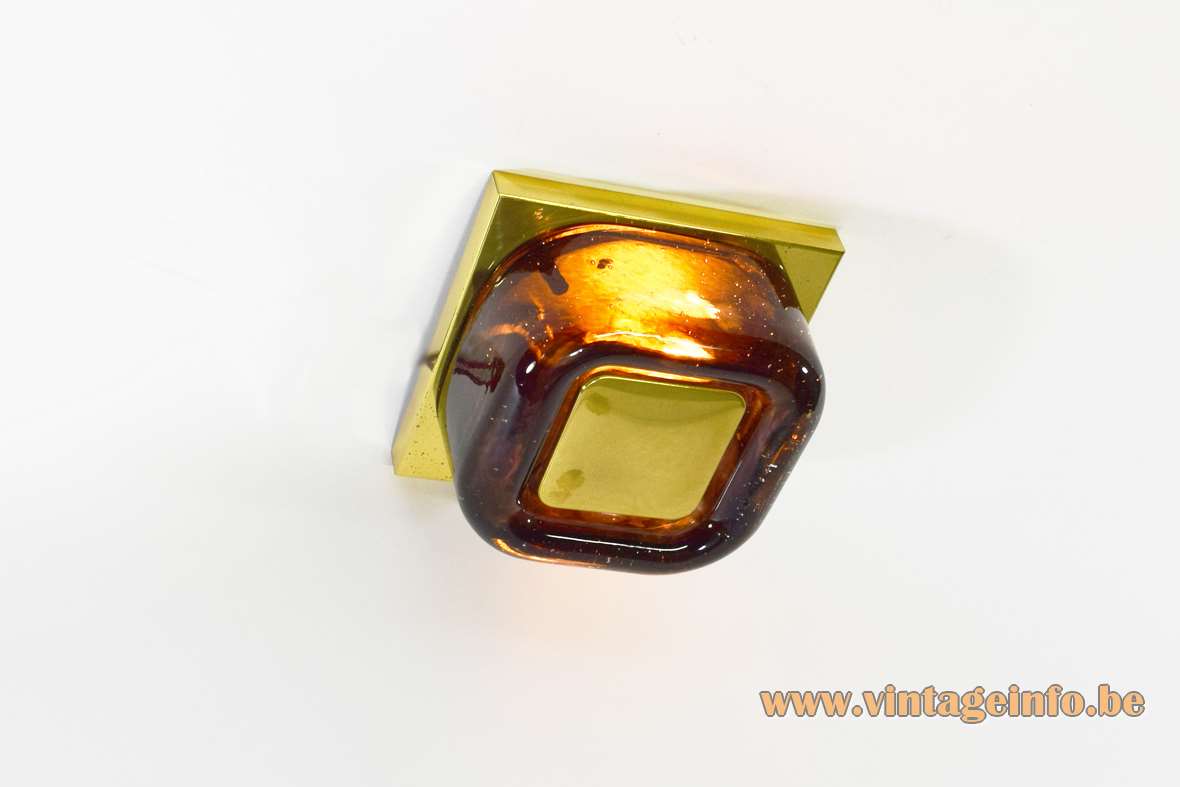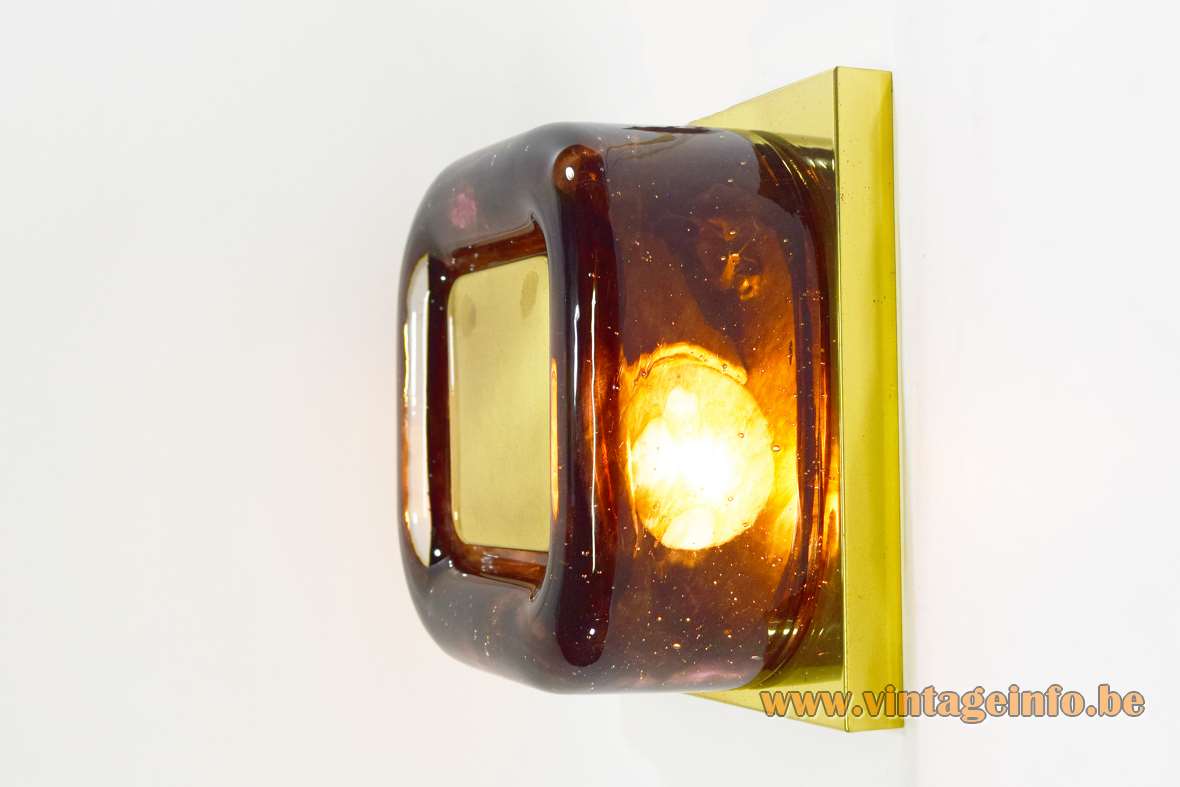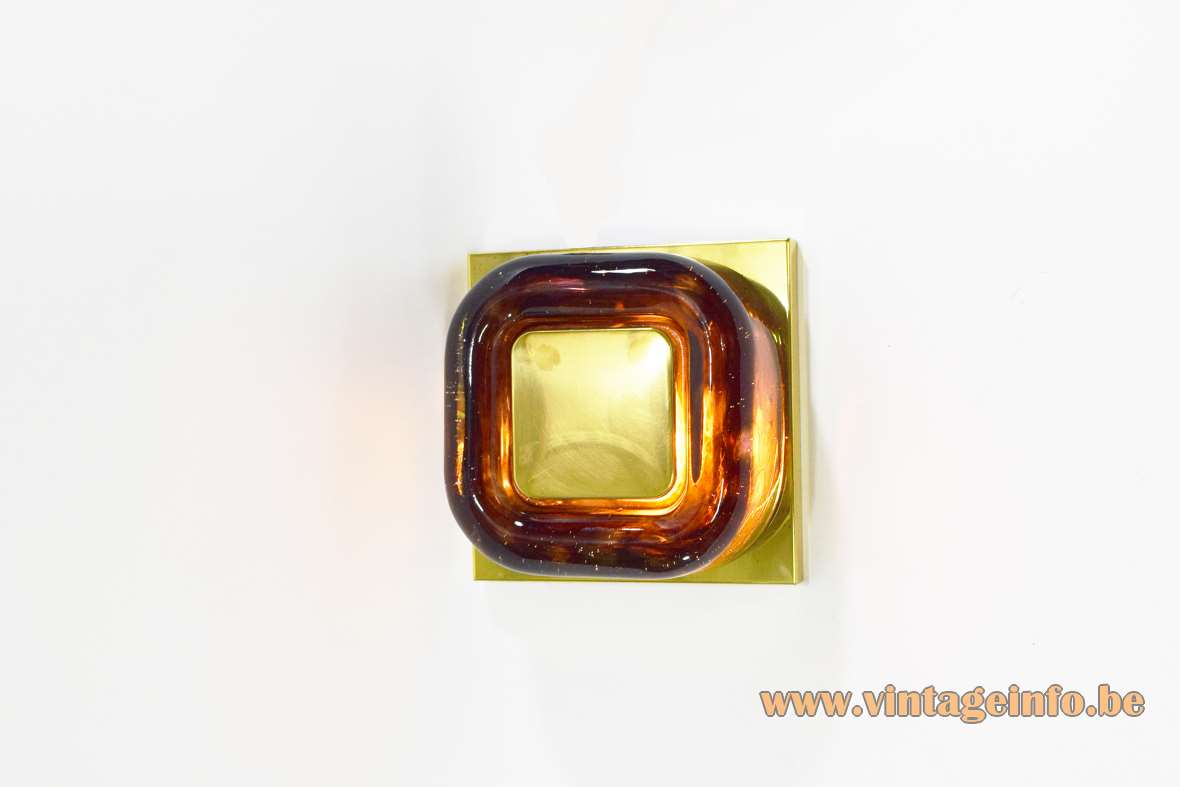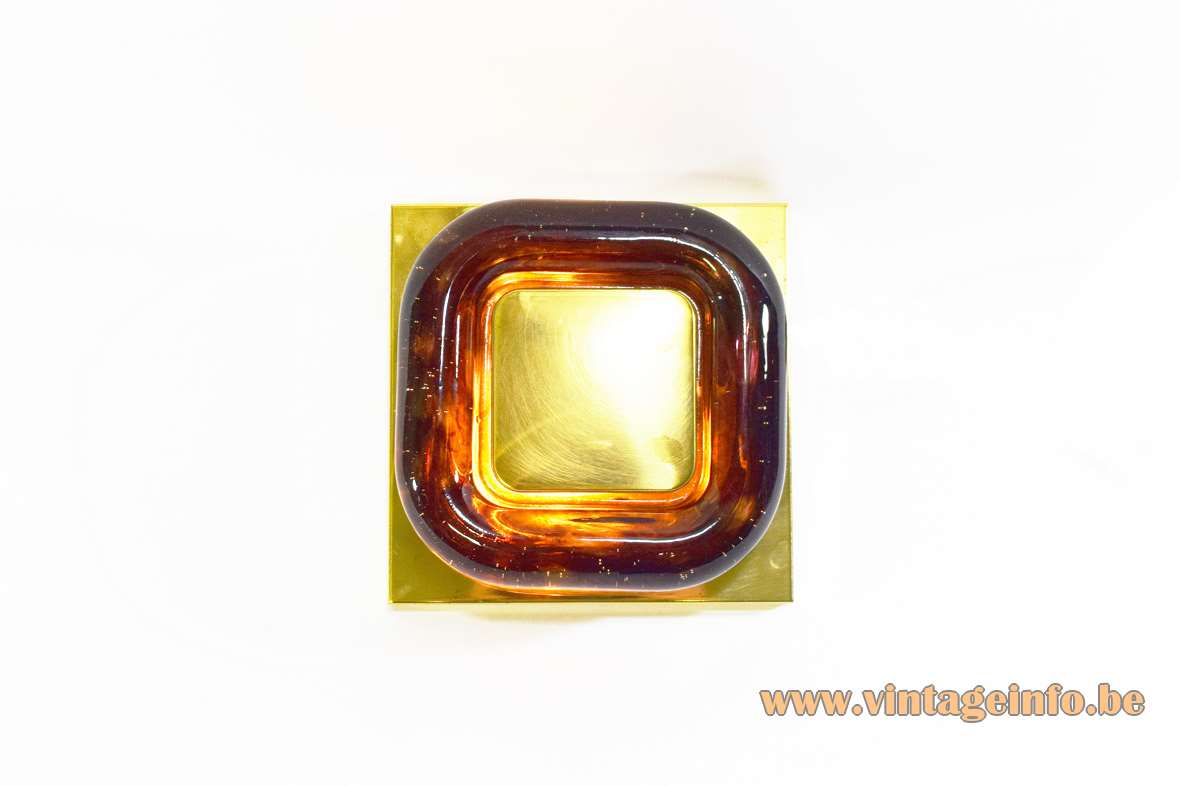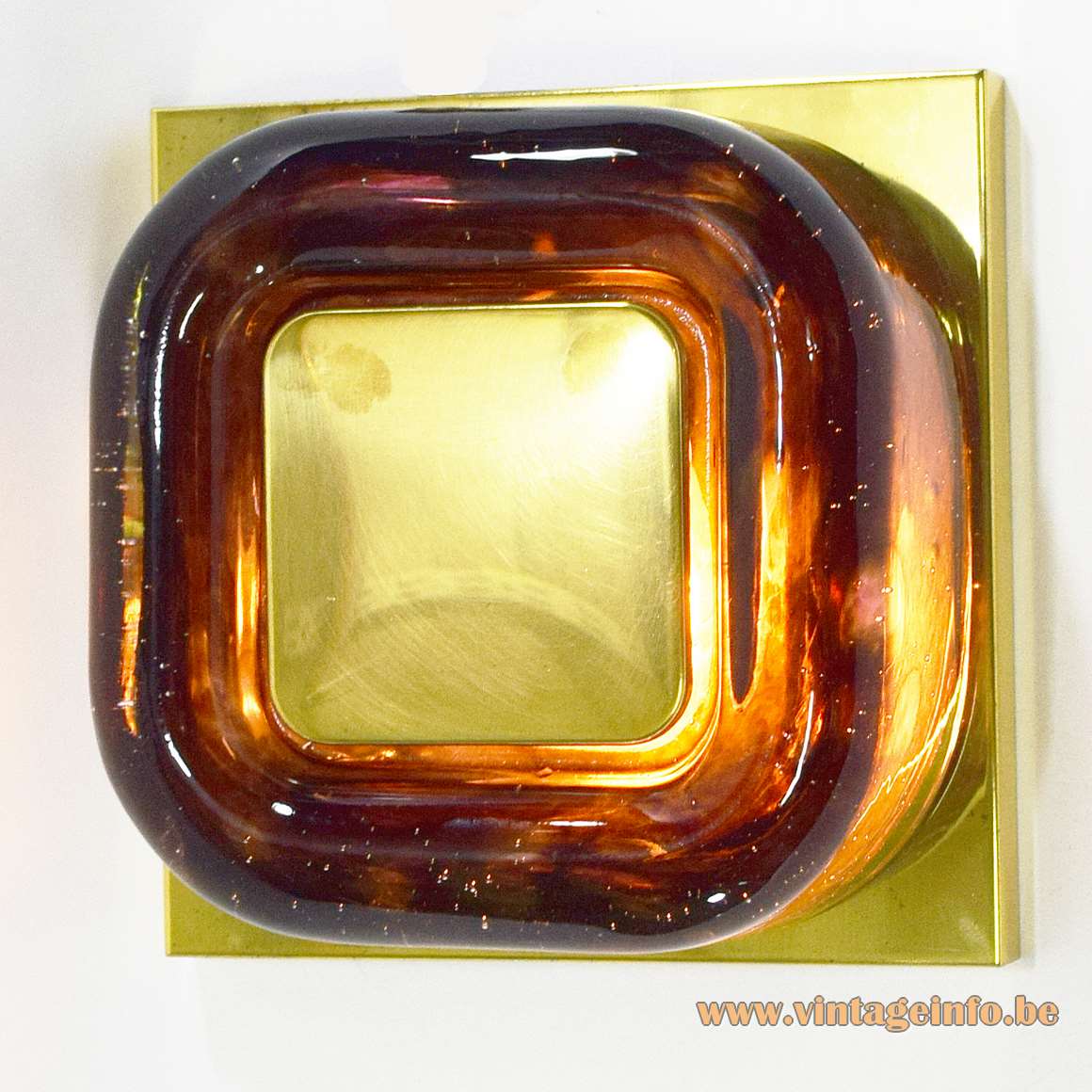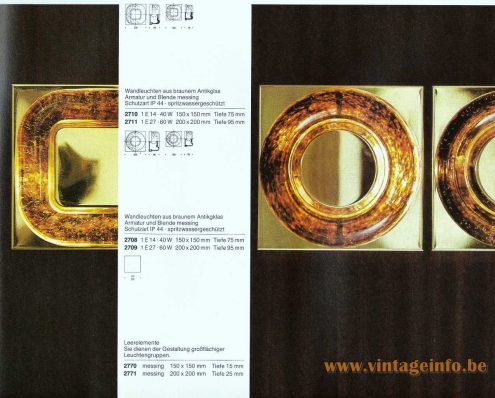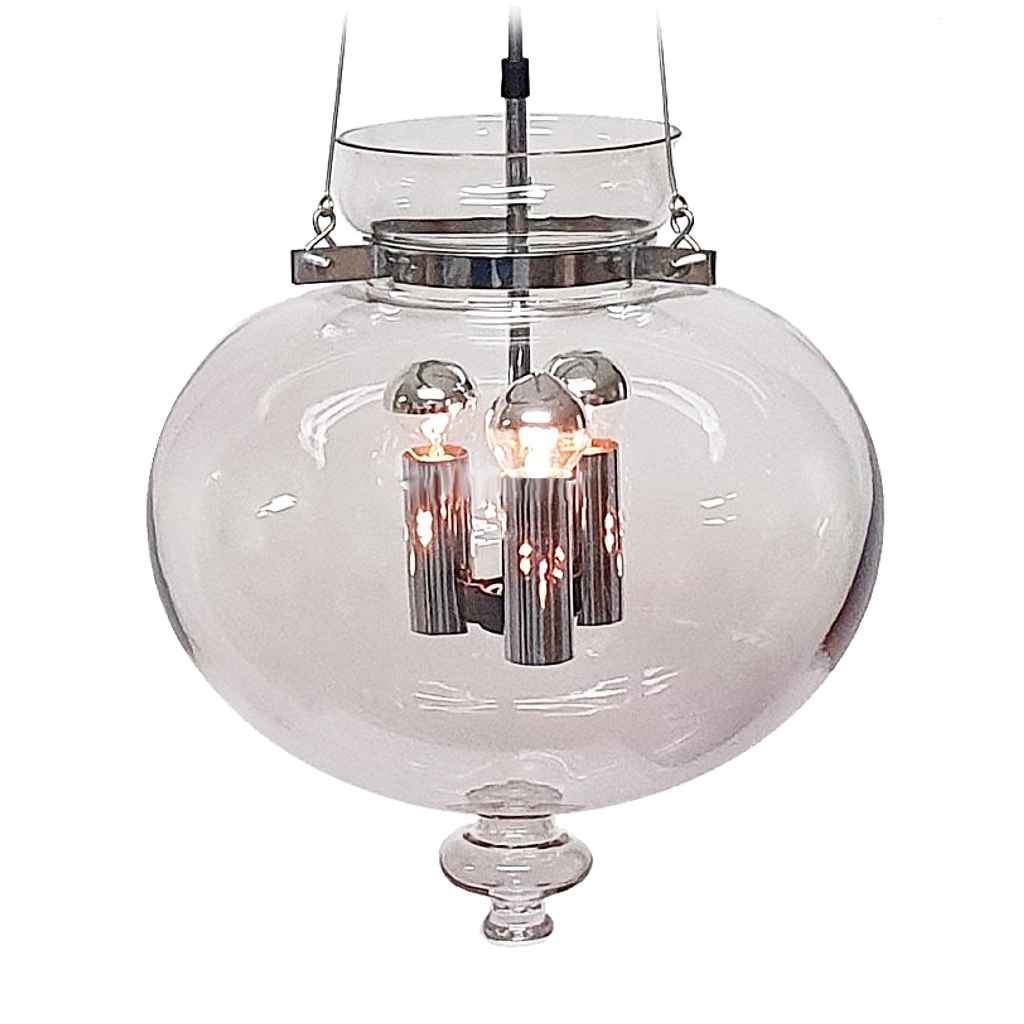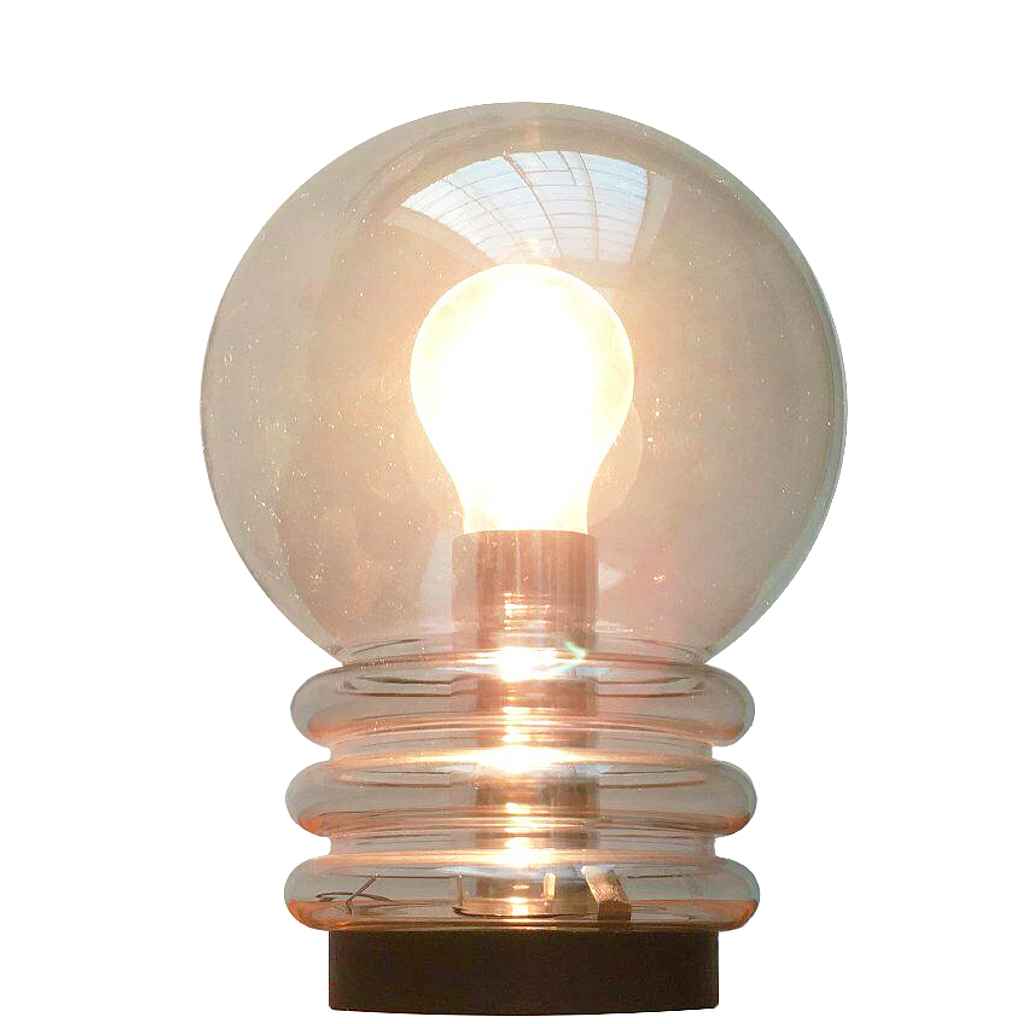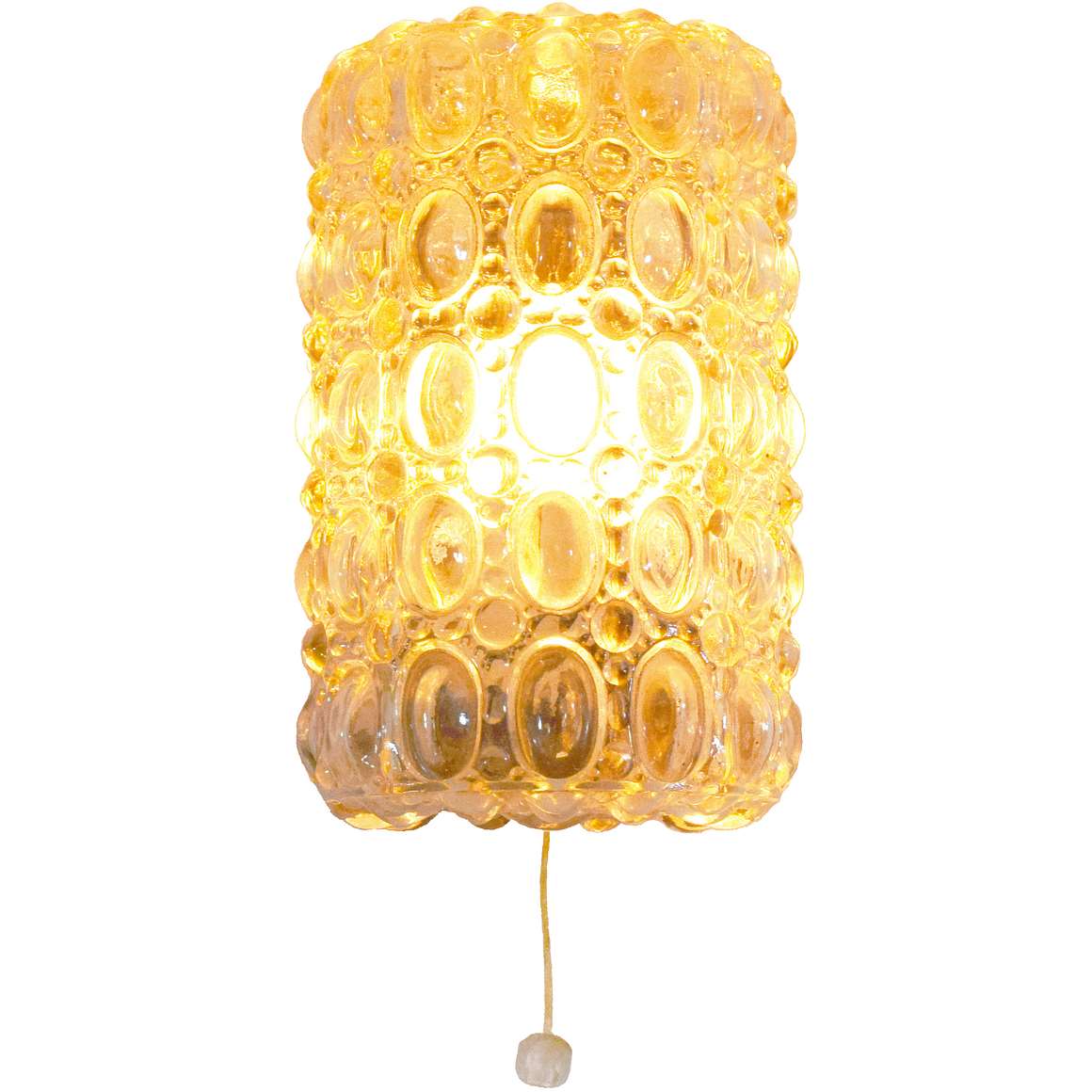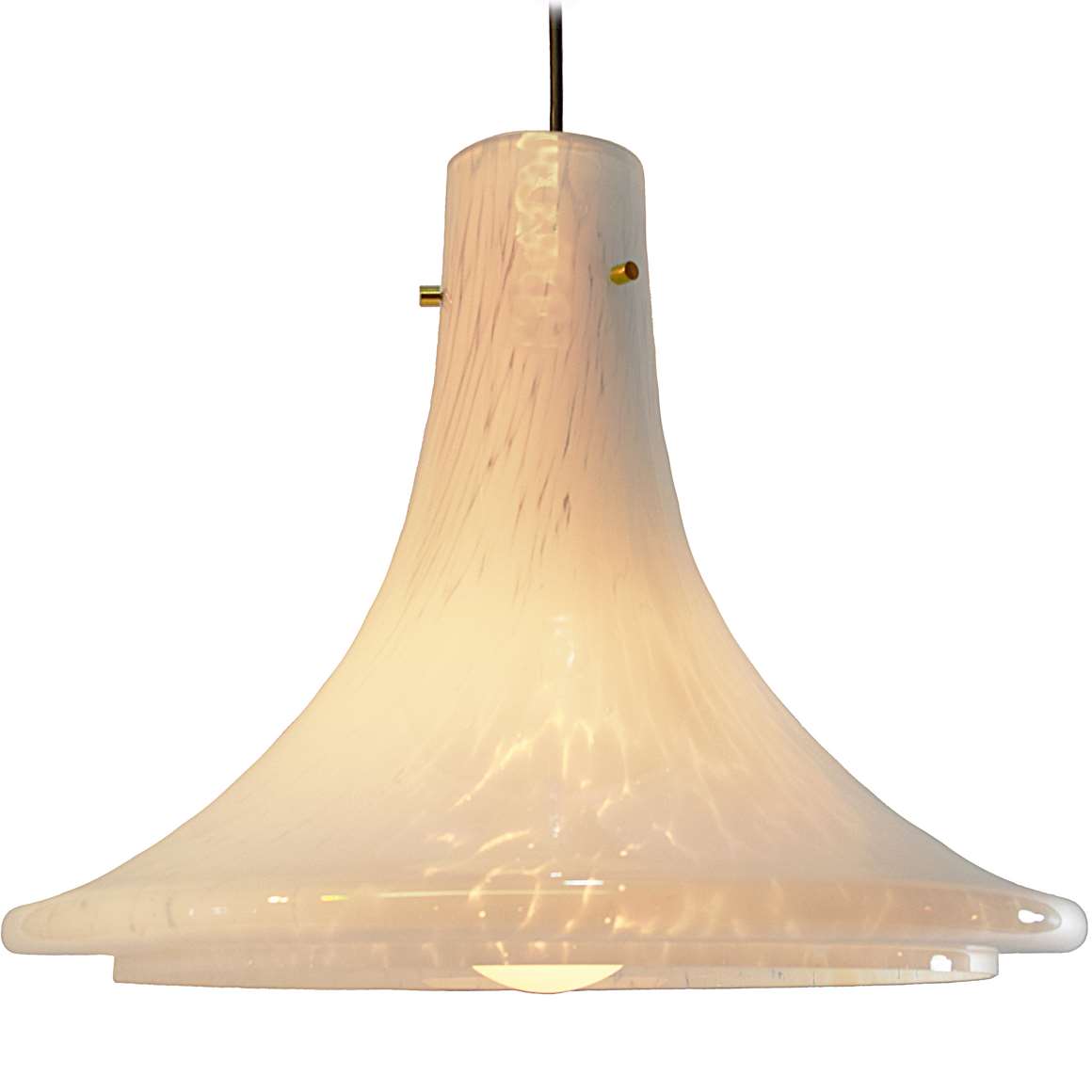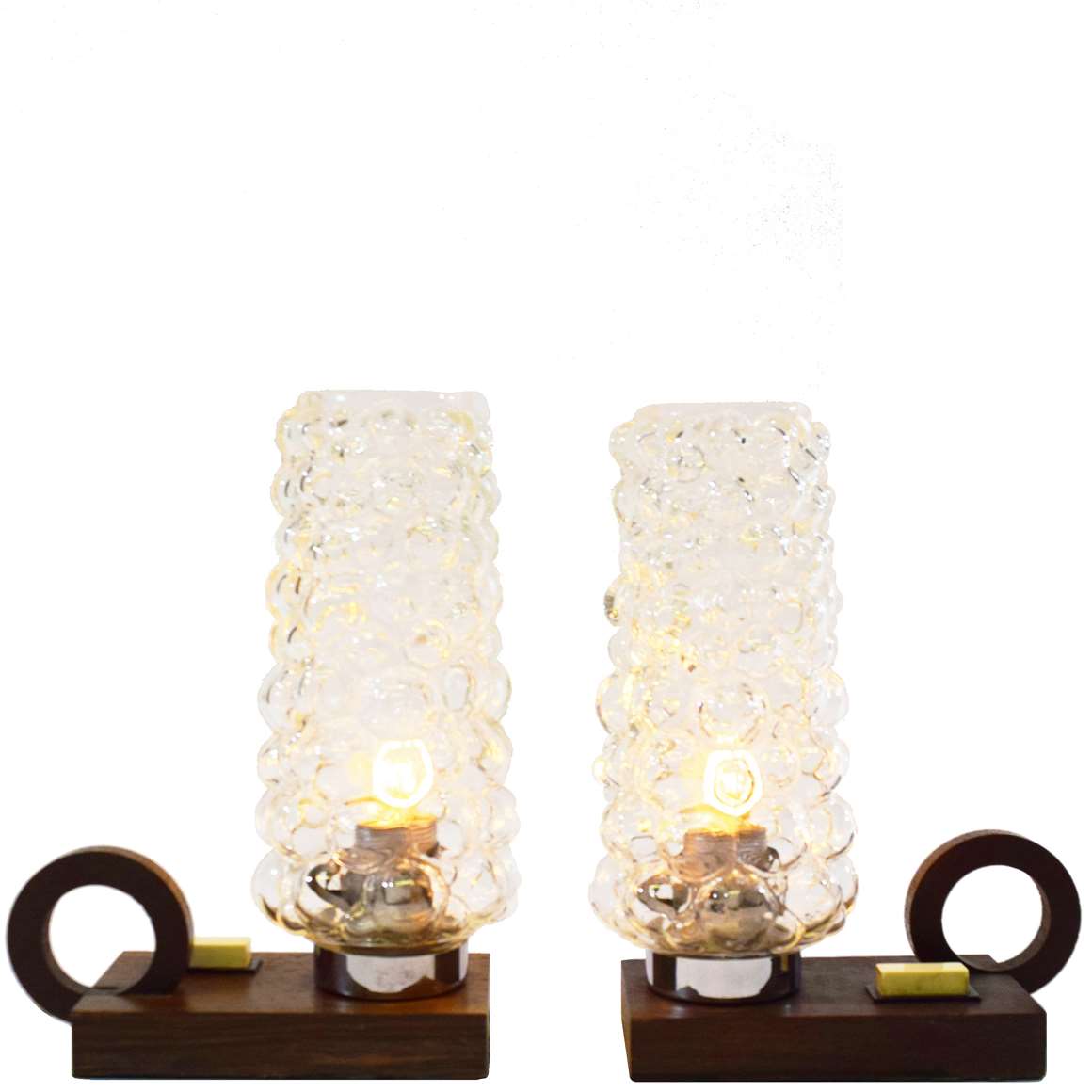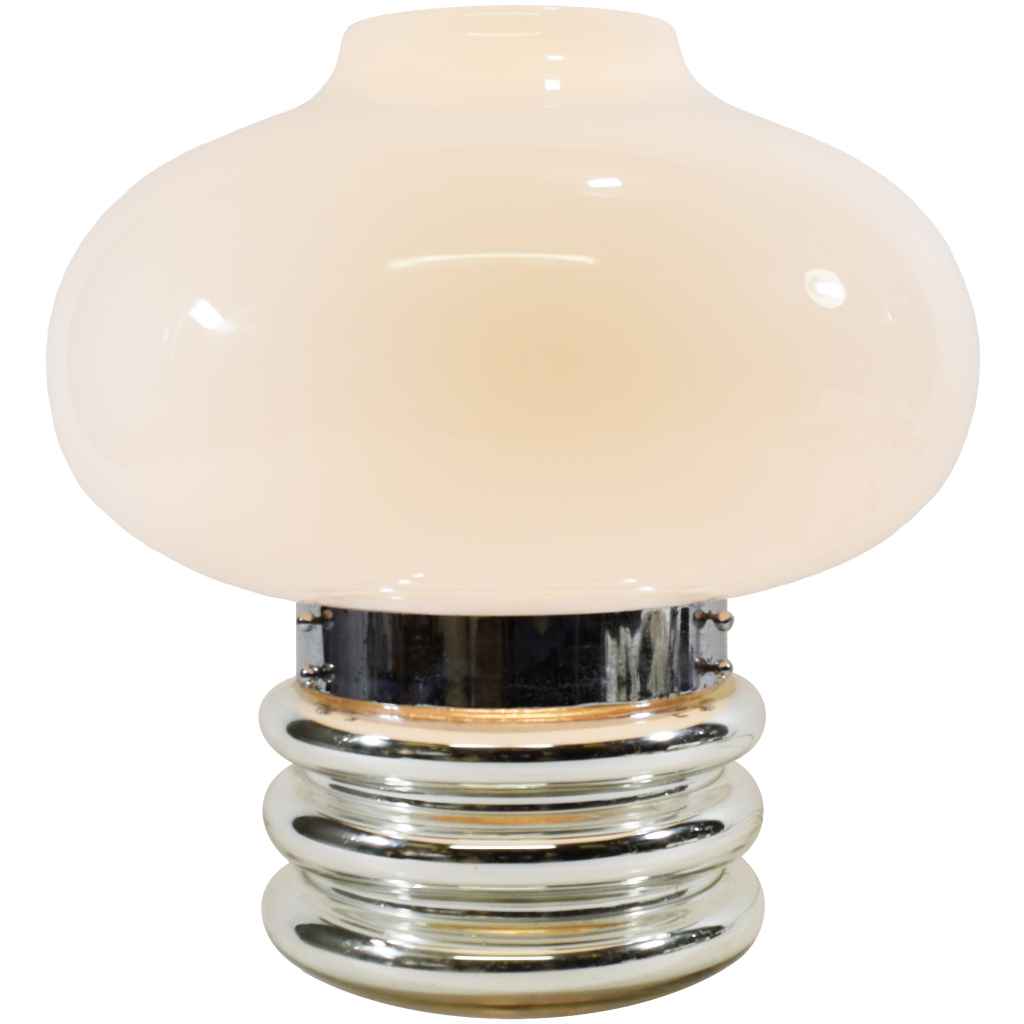1970s square brass & glass wall lamp – 1979 catalogue picture
Links (external links open in a new window)
Glashütte Limburg manufactures exclusive interior luminaires with natural gas
Vintageinfo
Melting ice glass pendant lamp
Opal glass mushroom table lamp
Helena Tynell bubble glass wall lamp
Artemide Delfo Mirror in the catalogue from 1973
1970s Square Brass & Glass Wall Lamp
Materials: Square brass wall mount. Some metal parts. Square crystal amber-brown clear hand blown bubble glass (pulegoso) with rounded corners. Square brass inlay disc with rounded corners. Porcelain E14 socket.
Height: 7,8 cm / 3.07”
Width: 15 x 15 cm / 5.90 x 5.90”
Electricity: 1 bulb E14, 1 x 40 watt maximum, 110/220 volt.
Not anytypeof light bulb canbeused. A round bulb is preferred. A candle stick bulb is to big for this lamp.
Period: 1970s – Mid-Century Modern.
Designer: Helena Tynell (1918-2016) in 1977.
Manufacturer: Glashütte Limburg, Glashüttenweg 1, 65549 Limburg an der Lahn – Germany.
Other versions: The 1970s square brass & glass wall lamp was also made in a round version. Versions exists in opaque glass and chrome. It can also be used as a flush mount/ceiling lamp. These lamps were made in 2 sizes.
This 1970s square brass & glass wall lamp won an iF Design Award in 1977. Discipline: Product
Helena Tynell
Hellin Helena Tynell, born as Helena Turpeinen on December 10, 1918 in Äänekoski, Finland. She past away at January 18, 2016 in Tuusula, also in Finland.
Tynell graduated in 1943 from the Central School of Arts and Crafts (Taideteollisuuskeskuskoulu) in Helsinki.
Between 1943 and 1946 she worked with ceramics design in Arabia Oy, Finland.
Parallel to this, and until 1953, she also worked with lighting at Oy Taito AB, the company of her husband. Between 1946 and 1976, she was one of the most influential designers in the Riihimäki Lasi – Riihimaen Lasi Oy glass factory. All in Finland.
Tynell also freelanced for companies as Flygsforsglass-works, Sweden, Bega Leuchten and Glashütte Limburg both in Germany and Fostoria Glass in the United States.
She was married to the famous designer Paavo Tynell (1890-1973).
Glashütte Limburg
Three months after the end of the Second World War in August 1945, graduate engineer Dr Walter Heinrich submitted his first plans for setting up a glass-works to the American military authorities in Limburg an der Lahn in Germany. Approval for building the factory was issued rapidly because the country urgently needed all types of glass. As a result, the ground was broken for Glashütte Limburg as early as 28 September 1945.
Due to the lack of power and the difficulty in obtaining materials during the immediate post-war period, construction was initially slow. However, on 12 May 1947 the glass-works finally held its first topping-out ceremony, and barely 2 months later, on 7 July 1947, Dr Heinrich used the blowpipe to take the first glass smelted in Limburg.
Glasshüttenwerke Limburg GmbH
Initially, the company was called Glasshüttenwerke Limburg GmbH and employed 80 people. The production range covered drinking vessels, mugs and many other types of catering glasses.
Production capacities were increased and Glashütte Limburg became Europe’s largest lighting glass specialist within just a few years, employing almost 1000 people.
The rapid expansion reached its limits at the end of the 1950s. The chairman of the glass-works Supervisory Council, Dr Gottfried Boley, suggested in 1962 that the shares in the company held by the state of Hessen should be privatised.
In the same year, the company succeeded in winning BEGA Gantenbrink-Leuchten OHG, founded in 1945 – which was at that time already one of the largest companies in the German lighting industry – as its ideal partner.
Catalogues
The very first lighting catalogue of Glashütte Limburgappears in 1963.
Six luminaires from the range, presented for the first time in 1964 at the Hanover industrial trade fair, receive awards for excellent design from the Industry Forum. They are included in the special exhibition “gute Industrieform” (good industrial design).
40 years after the first catalogue appeared, the range of lamps from Glashütte Limburg has increased to 1800 different products.
Designers
Many lamps of the company were designed by the Designabteilung Glashütte Limburg (design department) or Atelier Glashütte Limburg. Herbert Proft and Heinz-Josef Ohm designed many awarded lamps.
One of the best known designers was Helena Tynell who created several lamps for the company. Her most famous are the bubble glass lamps series.
Awards
The Glashütte Limburg company received the state prize for “Gute Form 1982 ” (good design 1982) and the “Corporate Design Award 1985”.
Glashütte Limburg received 160 iF Design Awards.
Pulegoso
Italian word taken from the dialect word pulega, which means bubble. The glass is containing numerous bubbles of all sizes. Produced by adding bicarbonate/soda, gasoline, or other substances to the glass. The bubbles make the glass semi-opaque and give the surface an irregular texture. The technique was developed in the 1920s by Napoleone Martinuzzi (1892-1977) on the island of Murano, Italy. It was used for the first time by the famous Venini company.
This wall lamp is reminiscent of the Delfo mirror. The mirror was designed by Sergio Mazza for Artemide in 1964.
